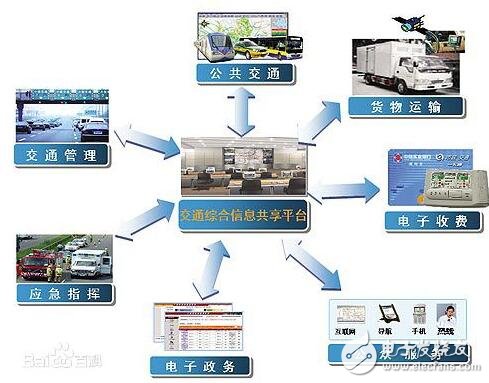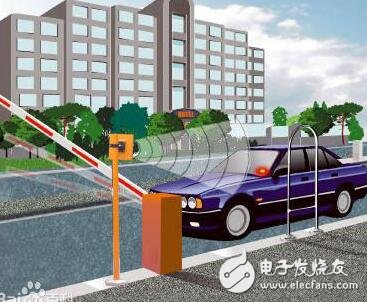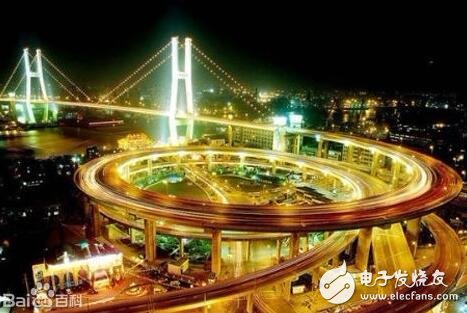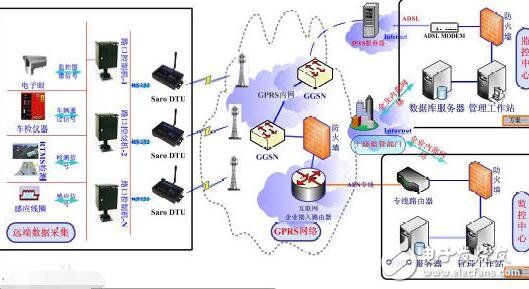The Intelligent TransportaTIon System (ITS) is the development direction of the future transportation system. It is the effective integration of advanced information technology, data communication transmission technology, electronic sensing technology, control technology and computer technology into the entire ground. The traffic management system is a real-time, accurate and efficient integrated transportation management system that works in a wide range and in all directions. The way of collecting traffic information is divided into manual collection mode and automatic collection mode. Automatic acquisition methods include magnetic detectors (including induction coil detectors, magnetoresistive sensors, etc.), optical detectors (including video detectors, laser detectors), microwave detectors (including microwave detectors and radar speedometers), and road conditions. And load cell (rain fog detector, road ice detector, wheel, axle loader, etc.). With the development of science and technology, automatic acquisition technology has been continuously researched, developed and applied. Various acquisition technologies have their own advantages and disadvantages. The combination of multiple collection methods to collect traffic information is a hot topic and focus at home and abroad. The information quality control technology, multi-source traffic information fusion technology, information multi-time scale prediction technology, information integration technology, information compression technology and storage technology have been developed, which greatly improves the accuracy of information and the types of information provided. Different types of traffic collection methods have limited types of parameters. For example, induction coils can only collect cross-section traffic parameters at fixed locations such as traffic flow, occupancy, and speed. Video detectors can only collect traffic flow, speed, occupancy, and queue length. Traffic parameters such as fixed locations; with a variety of traffic collection methods, traffic flow, speed, occupancy, queue length, travel time, interval speed and other sections and road segment traffic parameters can be obtained, enriching the collection of traffic information. It also increases the breadth of geographic collection. With the increase of the source of traffic data, the real-time demand for mass traffic information by traffic information users has gradually increased. In recent years, distributed parallel computing technology, high-performance computing servers and high-performance data processing algorithms have been applied to the processing of massive traffic information at home and abroad, improving the processing speed of information. With the development of magnetic and optical sensor technology, image processing technology and positioning technology, the accuracy of traffic information collection has been continuously improved. At the same time, with the continuous research on traffic detector configuration optimization technology in recent years, the collection of traffic information improves the economics of traffic information collection under the premise of ensuring the comprehensiveness and dynamics of information. This laid the foundation for the development and application of ITS systems. With the gradual maturity of artificial intelligence, statistical analysis, fuzzy logic, chaos theory, etc., some traffic information processing methods based on these theories and methods have been developed, which greatly improves the accuracy and quality of information processing. In 2012, the scale of China's urban intelligent transportation market maintained a high-speed growth trend, including intelligent public transportation, electronic police, traffic signal control, bayonet, traffic video surveillance, taxi information service management, urban passenger transportation hub information, GPS and police systems, The number of projects in 10 sub-sectors such as traffic information collection and release and traffic command platform reached 4,527; the market size reached 15.99 billion yuan, a year-on-year increase of 21.7%. In terms of enterprise scale, there are currently more than 2,000 enterprises engaged in the intelligent transportation industry in China, mainly focusing on road monitoring, highway toll collection, 3S (GPS, GIS, RS) and system integration. At present, there are about 500 companies in China engaged in the production and sales of monitoring products. The highway toll collection system is a very distinctive intelligent transportation field in China. There are more than 200 enterprises in China engaged in the production of related products, and domestic enterprises have obtained dual-interface CPU card technology for highway non-stop charging with independent intellectual property rights. In the field of 3S, although there are more than 200 enterprises in China, some leading enterprises occupy an important position in the field of highway electromechanical systems, highway smart cards, geographic information systems and rapid transit intelligent systems. However, compared with the intelligent and dynamic transportation system in foreign countries, the overall development level of China's intelligent transportation is still relatively backward. The data shows that intelligent transportation has been widely used in developed countries such as Europe, America and Japan. Its application rate in the United States has reached more than 80%, and the market size in 2010 reached 500 billion US dollars. Japan's market size will total 525 billion US dollars from 1998 to 2015, including infrastructure investment of 75 billion US dollars, vehicle equipment of 350 billion US dollars, and services such as 200 billion US dollars. In 2008, Intelligent Transportation in Europe generated an economic benefit of around 100 billion Euros. Intelligent transportation technology integrates advanced information technology, communication technology, control technology, sensing technology and integrated technology on a relatively complete infrastructure (including roads, ports, airports and communications) and applies it to the ground. Transport systems to create real-time, accurate and efficient transportation systems that work on a large scale. Its functions are mainly to improve the safety level of traffic, improve the traffic capacity of road networks and improve the productivity and economic benefits of automobile transportation. In the United States, Congress passed the Integrated Ground Transportation Efficiency Program (ISTEA) in 1991 to improve the efficiency of the entire road network using high technology and reasonable traffic distribution. The US Department of Transportation is responsible for the development of ITS throughout the country, and in the future. In the past six years, the government has allocated $660 million for research work on ITS. In Japan, the Ministry of Construction, as the largest investor in the government, invested 145.3 billion yen in the development of ITS from 1999 to 2000. Japan has set specific targets for its automated road system development plan. After 2001, it began to conduct empirical tests nationwide, and around 2015, the main trunk roads in the country were intelligent. Japan has formed a coordination system of official, non-governmental and academic institutions in the ITS project, which has greatly promoted the development of Japanese ITS. More than a dozen countries in Europe began investing more than $5 billion in the mid-1980s to jointly implement a DRIVE program aimed at improving the service level of road facilities, which means Europe's dedicated road infrastructure for vehicle safety. In addition to Europe, the United States, and Japan, emerging industrial countries and developing countries have also begun the comprehensive development and research of ITS. China's research in the field of ITS started late, but with the rise of global intelligent transportation technology research, in the 1980s, China has also accelerated the pace of research on intelligent transportation technology. On the one hand, major cities such as Beijing, Shanghai, and Shenyang have introduced some advanced urban traffic control and road monitoring systems from abroad; on the other hand, the state has increased the pace of independent development, such as the State Planning Commission and the Science and Technology Commission. The real-time adaptive urban traffic control system HT-UTCS, the SUATS system jointly developed by Shanghai Jiaotong University and the Shanghai Traffic Police Corps; in 1998, the Ministry of Communications officially approved the establishment of the ISO/TC204 China Committee, and the Secretariat is located in the Transportation Intelligent Transportation System Engineering. The research center, representing China's participation in the standardization activities of the international intelligent transportation system, is now conducting research on the framework of China's intelligent transportation system standard system. In addition, China will implement “unblocked projects†with 36 cities across the country to realize urban traffic intelligent control as the main content, and gradually promote it to more than 100 cities across the country. 1. China is a developing country. Compared with developed countries, China still has a large gap in the necessary basic conditions for the development of ITS. In addition, China's unique mixed traffic characteristics, as well as imperfect urban structure, road network structure and traffic structure. Therefore, it is necessary to study and formulate the strategy and development framework for the development of China's ITS in light of China's national conditions; 2. China's transportation is facing the dual pressures of economic development and resource constraints. Therefore, it is impossible to repeat the old road that developed countries have gone through. It must be based on the actual situation of China and take the road of China's ITS development to promote China's informationization process and cultivate its own ITS industry. ;3. The development trend of traffic management in the 21st century will inevitably be the intensification of the management system; the modernization of management facilities; the networking, information and intelligence of management tools; the efficiency of management; and the socialization of management methods. Therefore, the development of China's ITS will bring about a change in the traffic management system and model, and this change will directly affect the development of ITS. The future development of intelligent transportation will pay more attention to people's livelihood needs such as public travel and traffic safety. It is more suitable for China's national conditions, regions and industry characteristics. It also needs the participation of enterprises and social forces, and combines independent innovation with integrated innovation. Hong Xiaofeng, deputy director of the Department of Science and Technology of the Ministry of Transport, said. Intelligent transportation is the hotspot and frontier of the world's transportation development. It relies on existing transportation infrastructure and delivery vehicles to build safe, convenient, efficient and green transportation through the integration of modern information, communication and control technologies. The system is the goal, fully meeting the diversified needs of public travel and cargo transportation, and is an important symbol of the modern transportation industry. In foreign countries, Japan's smart road system, European green intelligent transportation, and American intelligent driving strategy are all effective practices in the development of intelligent transportation. Intelligent traffic applications such as electronic stop signs, dynamic navigation devices, and electronic non-stop charging systems have gradually entered the lives of Chinese people. "Strategy" predicts that from the perspective of the development of strategic emerging industries, as of the first half of this year, China's mobile phone users exceeded 1 billion, including 250 million smart phone users, and mobile phones surpassed computers for the first time to become the largest Internet terminals. The rapid development of mobile internet has also provided new means and development opportunities for intelligent transportation. At the same time of the rapid development of urban intelligent transportation, with the continuous construction and continuous improvement of China's transportation infrastructure, the market prospects and investment planning analysis report of China's intelligent transportation industry in 2014-2018 will also drive the development of intelligent construction in other transportation fields. "Strategy" summarizes these new situations and puts forward the development direction of China's intelligent transportation development: while supporting transportation management, it pays more attention to public travel and modern logistics services; while paying more attention to public transportation while serving for cars Traffic and slow traffic travel services; pay more attention to safety development and green development while paying attention to improving efficiency; on the basis of foreign and technology tracking, more domestic demand. Intelligent Transportation: Intelligent Transportation is a service system based on modern electronic information technology for transportation. Its outstanding feature is the collection, processing, distribution, exchange, analysis and utilization of information as the main line, providing diverse services for traffic participants. The socialization of automobile development, the sustainability of the human environment, and the intelligentization of information technology are the development backgrounds and motivations of intelligent transportation systems. As the number of automobiles in the rapid growth of the economy increases rapidly, transportation will face greater challenges. . In order to make people more convenient for travel and driving safety, I believe that our country should do its utmost to develop and popularize intelligent transportation systems. Intelligent Transportation System (IntelSports) is the development direction of the future transportation system. It is the effective integration of advanced information technology, data communication transmission technology, electronic sensing technology, control technology and computer technology into the entire ground traffic management. A comprehensive, real-time, accurate and efficient integrated transportation management system that works in a wide range and functions in a comprehensive manner. ITS can effectively utilize existing transportation facilities, reduce traffic load and environmental pollution, ensure traffic safety, and improve transportation efficiency. The 21st century will be the century of intelligent road traffic. The intelligent transportation system that people will adopt is an advanced integrated transportation management system. In this system, the vehicle is free to drive on the road by its own intelligence, and the road adjusts the traffic flow to the best state by its own intelligence. With this system, the management personnel will have a clear understanding of the road and the vehicle's whereabouts.
Portable Monitor Holder For Laptop,Adjustable Portable Laptop Holder,Adjustable Ergonomic Portable Aluminum Laptop Holder,Foldable Portable Desktop Laptop Holder,etc.
Shenzhen Chengrong Technology Co.ltd is a high-quality enterprise specializing in metal stamping and CNC production for 12 years. The company mainly aims at the R&D, production and sales of Notebook Laptop Stands and Mobile Phone Stands. From the mold design and processing to machining and product surface oxidation, spraying treatment etc ,integration can fully meet the various processing needs of customers. Have a complete and scientific quality management system, strength and product quality are recognized and trusted by the industry, to meet changing economic and social needs .
Portable Monitor Holder For Laptop,Adjustable Portable Laptop Holder,Adjustable Ergonomic Portable Aluminum Laptop Holder,Foldable Portable Desktop Laptop Holder Shenzhen ChengRong Technology Co.,Ltd. , https://www.dglaptopstandsupplier.com






Intelligent transportation concept
February 25, 2023